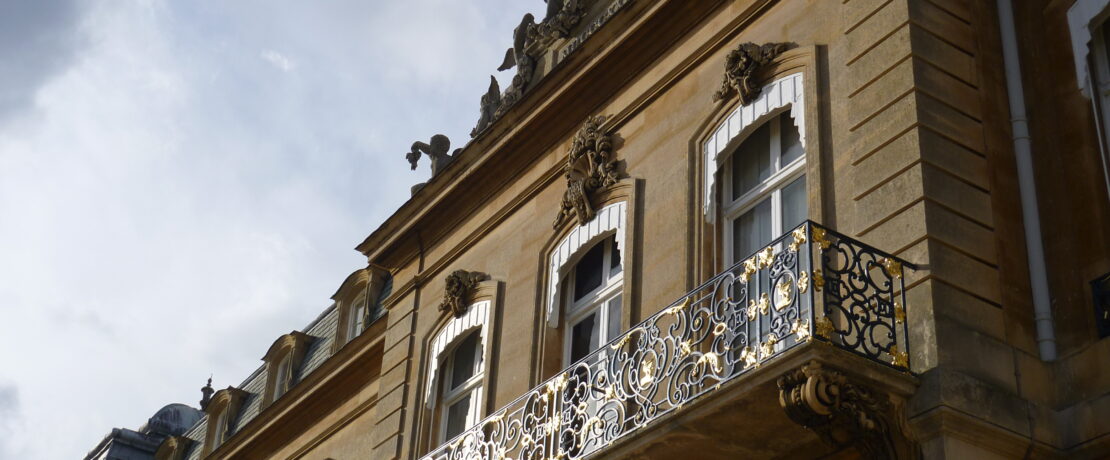Discover: Silsoe, Shillington and the nearby villages
Nestled north of Luton, near the Hertfordshire border and the Barton Hills National Nature Reserve, there is plenty to discover in this corner of the county.
Silsoe
Silsoe is probably best known for Wrest Park, with its famous view down the Long Water towards the Archer Pavilion. The grounds and house are managed by English Heritage and you can explore the planting and garden buildings as well as enjoying woodland and riverside walks.
The village also has an interesting history. It was granted a Royal Charter for a weekly market and twice yearly fair in 1319. The village grew steadily and by 1563 there were 21 families living in Silsoe. Most of those living there were servants, gardeners, stable hands and blacksmiths who worked at Wrest Park. The Estate built a church, school and alms houses for the village.
Look out for the village lock up on Church Road. It was probably built to imprison people misbehaving at the markets and fairs. They would either have been left to sober up or detained until they could be taken before a magistrate if the crime was more serious.
Silsoe Parish Council have several walks on their website to help you explore the area.
Barton-le-Clay
Like Silsoe, Barton-le-Clay originally stood on the A6. The village dates back to at least 1066 when it was mentioned in the Domesday Book. It was recorded as having a mill, a meadow large enough for six ploughs and enough woodland for200 pigs per year. One way of assessing the value of an estate was to estimate the number of eight-ox plough teams needed to cultivate the land so we know that there was enough land at Barton-le-Clay to require 6 ox teams to work it.
Look out for the sixteenth and seventeenth century timber-framed houses and the chequerboard style decoration of the fifteenth century church tower.
Download a walk from the Chilterns Society: Barton_le_Clay

Shillington
The Shillington Hoard of 123 Roman gold coins was discovered in the late 1990s. Many of the coins were rare types and all were in good condition, suggesting they did not circulate for long. They may have been deposited for ritual reasons at a religious site. Other Roman finds include bracelets and brooches.
Look out for All Saints Church, which sits on a prominent chalk hilltop, dominating the village.
A Silsoe – Shillington Circular walk from Central Bedfordshire Council can be downloaded here: Silsoe – Shillington Circular Walk
Gravenhurst
A settlement at Gravenhurst is mentioned in the Domesday Book, being in the ‘hundred of Flitton’ with just 11 houses recorded in 1086. The name Gravenhurst may come from the old English “grafan-hyrst” meaning “wooded hill of the grove or thicket”, and although much of the parish is now open farmland, three areas of ancient woodland remain, Pateman’s Wood, Cainhoe Farm Wood and Cainhoe Park Wood.
Look out for St Mary’s Church in Lower Gravenhurst which is managed by the Churches Conservation Trust. It sits about half a mile away from the current village which is now served by St Giles’ Church.

Meppershall
1913 marked the beginning of market gardening in the area, with the first glass house erected in the village by William C. Cakebread for cucumbers. So many greenhouses were built in the village that it became known as a ‘glass city’ growing salad crops for local markets, and which could also further afield via the railway. Large orchards, particularly for cherries, were also planted.
Look out for the Grade II listed Manor House, dating from the seventeenth century which is timber framed.
Stondon
A surprising local industry grew up in Stondon in the mid nineteenth century – coprolite digging. The mining and selling of coprolite, fossilised dinosaur dung, was lucrative as it could be used as a fuel and also as a fertiliser. Geologists, palaeontologists and museum curators were also interested in the discoveries being made.
Look out for the Latin Cross of Portland stone erected in churchyard as a War Memorial.
Stondon Parish Council have several walks on their website to help you explore the area.
Read more on our website
Our photo story about a proposed development in the area explores the local landscape.
Or discover more six more villages from across Bedfordshire








